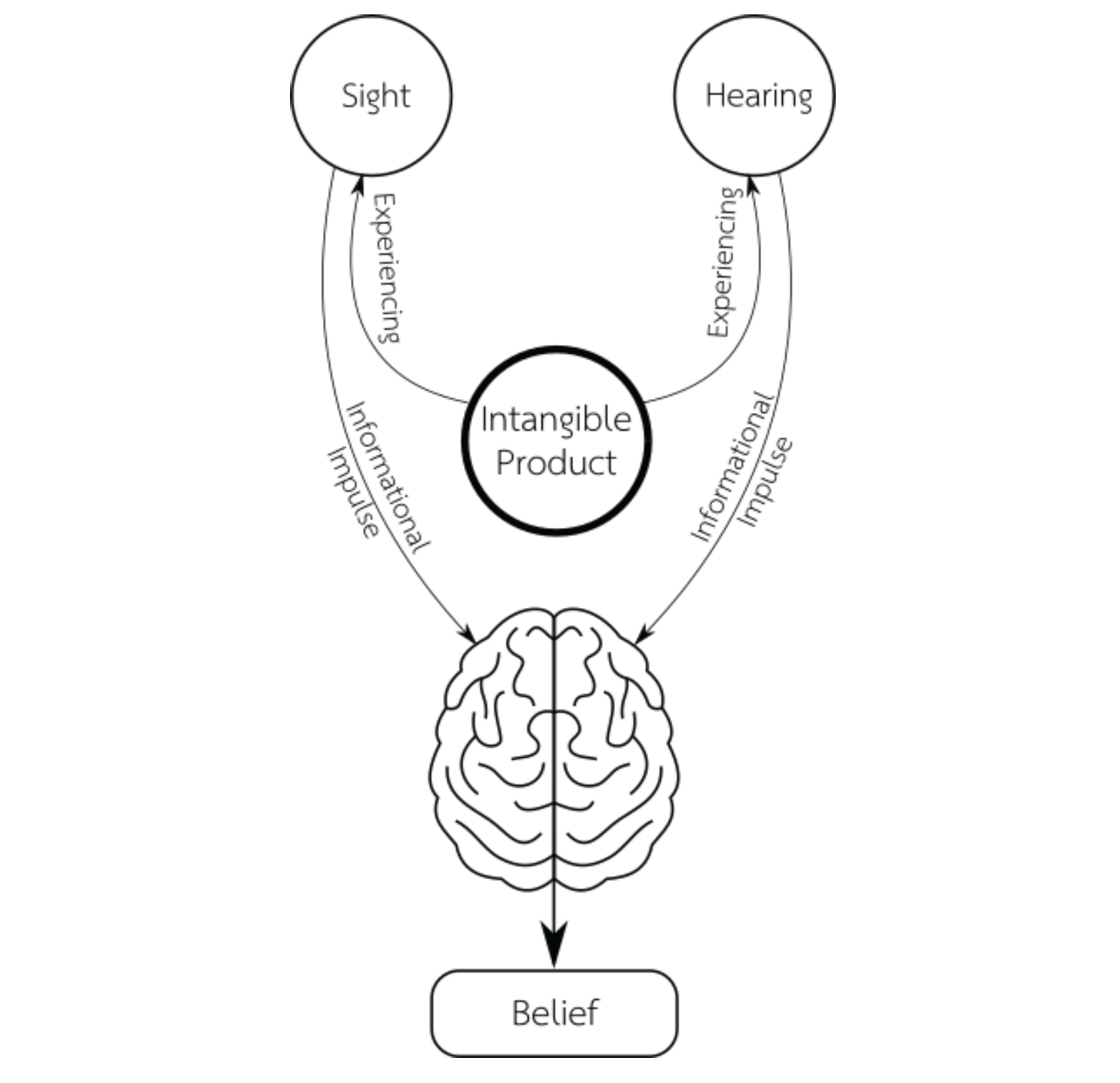Senses in User Experience of Intangible Product Design
DOI:
https://doi.org/10.69598/decorativeartsjournal.1.125-155Abstract
In the electronic consumer market, both digital and physical products exist. However, in this new era of information technology and virtual space, humans are more involved with digital products. Most physical products are normally experienced by the human senses through sense organs. Digital products are distributed and utilized through electronic devices, which means the digital products are represented within a computerized system. Hence, the sense of seeing is the most crucial sense for experiencing digital products. The electronic device has been used to present digital media within the computerized system. There are three objectives for this article. First is to present the different types of products – focusing specifically on intangible products. The second is to explore the different senses of the human body and how they will be used in intangible products. The third is to recommend the possibility of producing and using digital elements in delivering the sense. Literature research was also used to gather information from different sources online. Representational theory and sensory semantic theory are the two methodologies for analyzing data and recommending the possibility of producing digital elements to achieve the right sense. The output of intangible products is primarily dependent on the display device and its peripherals. The primary output device is either a monitor, a mobile screen, or a speaker, which can output both visual and audio data. Eyes and ears are employed for data detection. Any other senses would need to rely on the characteristics and qualities of digital elements on the screen. In conclusion, intangible product design must rely heavily on interface design to convey meaning to the user. Connecting with the intangible via the remaining sense by conveying representational elements can be comparable to the physical product's sense. In the metaverse, there could be a second revolution that creates multiple senses to replace the real world’s environmental senses.
References
Sense Foundation. (2022). What are the 7 Senses? http://www.7senses.org.au/what-are-the-7-senses/
Asifa Majid, Asifa & et al. (2018, November 5). Differential coding of perception In the world’s languages. Proceedings of the National Academy of Sciences, 2018. 115 (45) 11369-11376 https://doi.org/10.1073/pnas.1720419115
Bhasin, Hitesh. (2018, September 27). The 4 Types of products. Marketing91. https://www.marketing91.com/types-of-products/
Bowers, Micah. (2022). The Ultimate Experience: A Guide to the Principles of Sensory Design. https://www.toptal.com/designers/ux/sensory-design
Decker, Fred. (2019, January 31). What Is an Example of an Intangible Good? Chron. https://smallbusiness.chron.com/example-intangible-good-35031.html
Dhara, M. (2022). Types of Product. Business Management Ideas. https://www.businessmanagementideas.com/products/types-of-product/20612
Eatough, Erin PhD. (2021, December 13). You have more than 5 human senses. How are you using yours? BetterUp. https://www.betterup.com/blog/human-senses
Forsey, Caroline. (2021, August 19). Product Classification: What It Is & Its Impact on Marketing Efforts. Hubspot. https://blog.hubspot.com/marketing/product-classification
Gray, Alex. (2017, January 09). Humans have more than 5 senses. World Economic Forum. https://www.weforum.org/agenda/2017/01/humans-have-more-than-5-senses/
Groeger, Lena. (2012, February 28). Making Sense of the World, Several Senses at a Time. Scientific American. https://www.scientificamerican.com/article/making-sense-world-sveral-senses-at-time/
Hiskey, Daven. (2019, September 12). Humans have a lot more than five senses — here are 18. Considerable. https://www.considerable.com/health/healthy-living/humans-five-senses/
Hungerford, Tom. (2012, February 10). How do children connect to their world? The Twelve Senses: Rudolf Steiner’s lectures on healthy human development. Course title: The Twelve Senses- what are they and how do they work together to contribute to healthy human development? Melbourne Rudolf Steiner Seminar. https://www.steinerseminar.net.au/children-connect-world-twelve-senses-rudolf-steiners-lectures-healthy-human-development/
Indeed Editorial team. (2021 September 30). Product Classifications: Definition, Types and Significance. https://www.indeed.com/career-advice/career-development/product-classification
Jarrett, Christian. (2014, November 19). Psychology: How many senses do we have? BBC Future. Source : https://www.bbc.com/future/article/20141118-how-many-senses-do-you-have Published by November 19, 2014.
Mailloux Z & Smith Roley S. (2013, July). Sensory Integration Development and Early Signs of Difficulties. Pathways.org https://pathways.org/topics-of-development/sensory/
Nagar, Gandhi. (2022). Product Classification. Government College for Woman. https://gcwgandhinagar.com/econtent/document/15871777540COMGENE04-Product.pdf
Peads in a pod. (2021, August 16). Sensory processing and our 8 senses explained (yes, 8 not 5!).
Rymanowicz, Kylie. (2014, November 19). The seven senses: supporting your child’s sensory development. Michigan State University Extension. https://www.canr.msu.edu/news/the_7_senses_supporting_your_childs_sensory_development
Simpleshow. (2018, March 7). What is the Sensory Semantic Theory? Simpleshow. https://videomaker.simpleshow.com/understanding-sensory-semantic-theory/
Spacey, John. (2018, November 17). 18 Examples of Intangible Goods. Simplicable. https://simplicable.com/new/intangible-goods
Sprouse, Sydney. (2022, May 15). Making Sense of Your Five Senses. Ask the scientists. Source : https://askthescientists.com/senses/#toggle-id-1
The basic of Philosophy. (2022, May). Representationalism. Philosophy Basics. https://www.philosophybasics.com/branch_representationalism.html
Vazquez, Alexandra. (2022, May). Intangible products. G2.com. https://www.g2.com/glossary/intangible-products-definition.

Downloads
Published
How to Cite
Issue
Section
Categories
License
Copyright (c) 2022 DEC Journal

This work is licensed under a Creative Commons Attribution-NonCommercial-NoDerivatives 4.0 International License.
Published by Academic Affairs Division, Faculty of Decorative Arts, Silpakorn University. The copyright of the article belongs to the article owner. Published articles represent the views of the authors. The editorial board does not necessarily agree with and is not responsible for the content of such articles.


